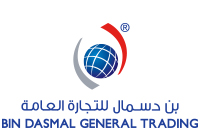In 2025, the UAE’s architectural sector continues to evolve, driven by the intersection of sustainable design, regulatory demands, and aesthetic innovation. Among the many elements influencing building envelopes, cladding materials remain central to how structures respond to the region’s climate, design mandates, and environmental objectives.
As developers and consultants aim to meet evolving expectations in both commercial and residential projects, the role of aluminum cladding suppliers has become increasingly significant in shaping urban design outcomes across the Emirates.
Thermal performance and environmental adaptability
The UAE’s extreme solar exposure, combined with its high ambient temperatures, places unique performance demands on cladding materials. In this context, aluminum-based systems are gaining prominence due to their thermal reflectivity, resistance to corrosion, and compatibility with passive cooling strategies.
Aluminum cladding provides a lightweight yet durable option for facades, curtain walls, and shading systems, minimizing structural load while offering high resistance to UV degradation. With the growing integration of energy efficiency ratings into both new and retrofit construction projects, aluminum cladding suppliers are offering products engineered to support thermal performance and reduce cooling loads.
Aesthetic versatility in modern facade design
Architectural trends across Dubai, Abu Dhabi, and Sharjah emphasize streamlined profiles, integrated lighting, and minimal surface textures. Cladding systems, particularly those manufactured from aluminum composites or powder-coated sheets, provide a clean and modern aesthetic that complements this design direction.
Color stability and texture variety also make aluminum a preferred material in high-rise applications and public buildings. Customizability in surface finishes, including anodized, brushed, or perforated designs, aligns with the creative direction of leading architectural firms involved in UAE urban planning initiatives. As facade design becomes a visual statement of brand identity or urban intent, aluminum cladding suppliers are increasingly positioned at the forefront of building customization strategies.
Compliance with fire and sustainability standards
Building codes in the UAE, especially post-2017 updates to the UAE Fire and Life Safety Code, place strict requirements on exterior cladding materials. Aluminum systems that include non-combustible cores and tested assembly configurations are compliant with these regulations and often preferred for mid- to high-rise developments.
In parallel, the increased prioritization of green building standards has led project managers to evaluate materials not only by performance but also by lifecycle impacts. Many aluminum cladding systems now include recycled content and are certified under environmental declarations, making them suitable for projects targeting LEED, Estidama, or WELL certifications.
Market demand and material innovation
Urban development across the UAE continues at scale, particularly in smart city zones, transit hubs, and tourism districts. This momentum is driving innovation in cladding material technology, including the integration of photovoltaic surfaces, acoustic insulation layers, and self-cleaning coatings.
Aluminum cladding suppliers are responding by offering multi-functional panels that support not only architectural aesthetics but also operational efficiencies and system integrations. These advancements are redefining how exterior materials contribute to the long-term viability of urban structures.
Material direction for UAE’s urban envelope in 2025
In 2025, aluminum continues to lead cladding trends in the UAE due to its ability to combine visual quality, environmental resilience, and regulatory compliance. As urban design becomes more performance-driven and sustainability-focused, aluminum cladding suppliers are playing a central role in enabling construction professionals to meet aesthetic, safety, and efficiency goals.
From new developments to retrofits, material selection in the UAE’s urban landscape is increasingly informed by long-term value, positioning aluminum cladding as a strategic solution in the evolution of modern architectural design.
Categorised in: AC Products Supplier, aluminum cladding suppliers
This post was written by Second Admin


Comments are closed here.